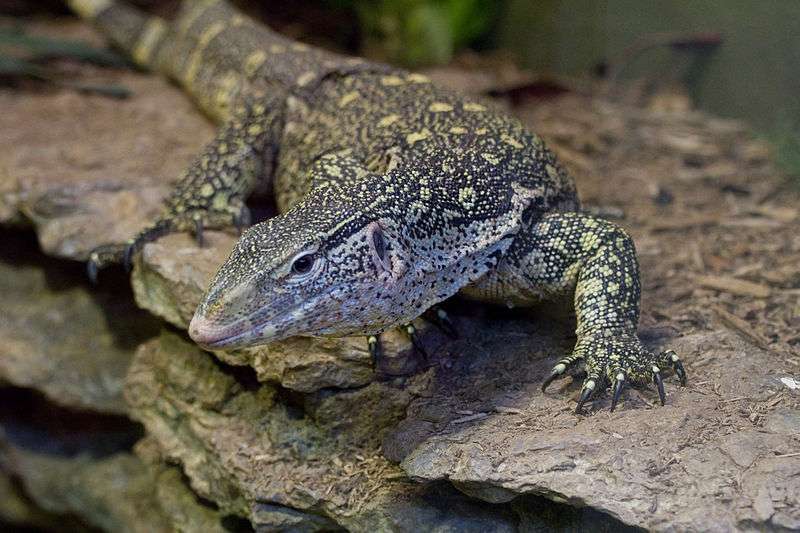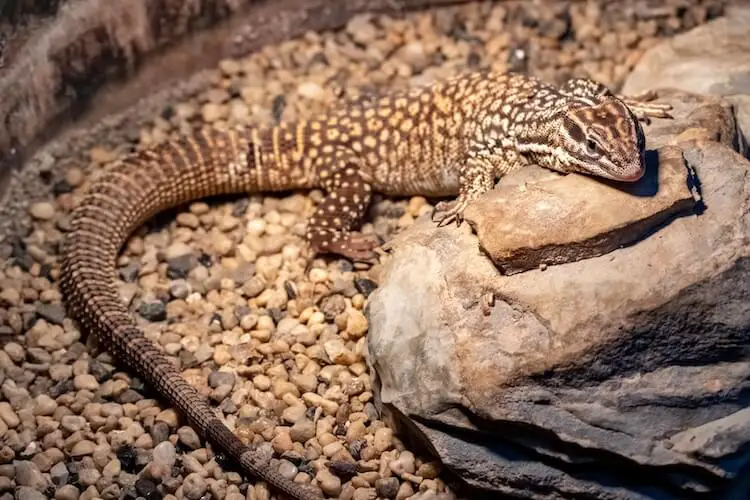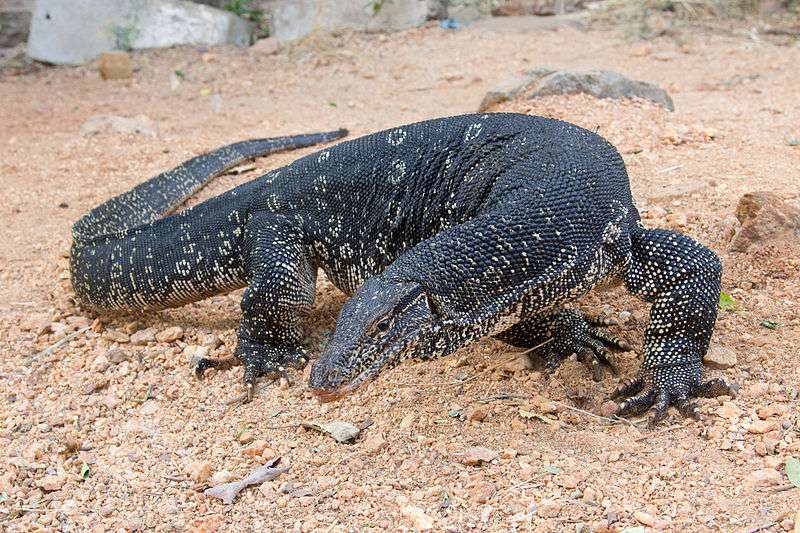
Description
Scientific name: Varanus ornatus
Life span: 15 years
Ornate monitors are huge lizards, reaching lengths of up to 2 meters. The back is dark, ranging from olive green to black, with cross bands of ocelli in shades of yellow or cream, as well as extra bands on the tail. The ventral side has bands of gray and a yellowish color. The body’s four or five ocelli bands were meant to set an ornate monitor apart from the Nile monitor which has six to nine. As the animal ages, the marks start to disappear considerably.
Native Region/Habitat
The ornate monitor is found in Central and Middle Africa. They inhabit humid tropical forests that frequently have cliffs or rocky outcrops.

Behavior
They are scavengers and predators that consume everything that resembles meat in some way, including crabs, insects, clams, and even rats and snakes. The ornate monitor has one of the strongest and most resilient heads of any monitor species. They crack apart clams, snails, and crabs for the flesh within by using their teeth like nutcrackers.
Ornate monitors trust their human captors more than Nile monitors, and some grow fairly submissive. Even said, not all members of this species are friendly; some will stay distant or untrusting despite being treated gently. In comparison to their conduct toward humans, their interactions with one another appear to be more adversarial than those of many other monitors.
Care As a pet/In captivity
Given their excellent swimming abilities, ornate monitors should have access to a sizable body of water. With a basking area at 120° F, the enclosure’s daytime temperature should be kept around 85° F. 70 to 80 degrees Fahrenheit should be the average at night. Ornate monitors require 8 to 12 hours of light each day.
When it comes to maintenance, Argus and ornate monitors are virtually comparable. Ornate are better prepared to deal with hard-shelled prey like snails and crabs, though they are not necessary for their diet. While ornates don’t dig quite as much as argus monitors do, they nevertheless like a deep earth substrate that can accommodate a burrow.
Table





